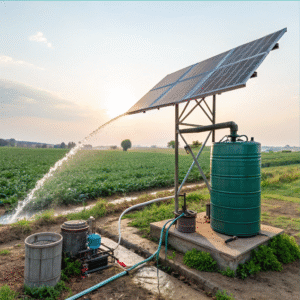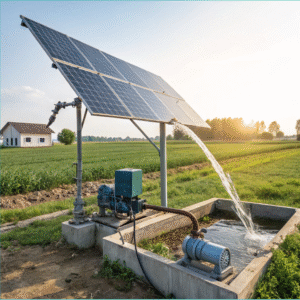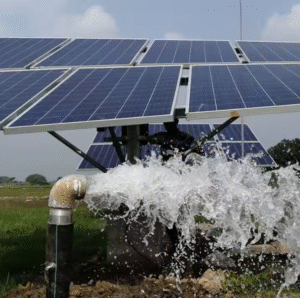Would you like to see how much you could save over 10 or 20 years with solar?
by
Would you like to see how much you could save over 10 or 20 years with solar?
Solar energy isn't just about going green—it's about keeping more green in your wallet. Curious how much you could save over a decade or two?
Switching to solar can save homeowners $10,000-$30,000 over 20 years, with payback periods of 5-10 years depending on location, energy usage, and local incentives. That's money back in your pocket year after year!
The savings from solar add up year after year like compound interest in a high-yield savings account. But to understand your true savings potential, we need to dig into the key factors that determine how much you'll save—and how quickly.
Do you want high-efficiency solar panels with a 25-year performance warranty?
Not all solar panels are created equal. Would you prefer maximum savings from the start or gradual savings with lower upfront costs?
High-efficiency solar panels (19-22% efficiency) produce more power in less space and typically come with 25-year warranties, ensuring long-term savings despite higher initial costs. Premium panels can generate 20-30% more energy over their lifespan.
Understanding Solar Panel Efficiency and Warranties
When I first researched solar options, I was amazed to learn that panel efficiency directly impacts my roof's "energy harvest." Here's what matters most:
-
Efficiency Ratings:
- Basic panels: 15-17% efficiency
- Premium panels: 19-22% efficiency
- Experimental tech: Up to 47% (but not commercially viable yet)
-
Performance Warranties:
- Standard: 80% output after 25 years
- Premium: 90% output after 25 years
-
Degradation Rates:
- Average: 0.5-0.8% per year
- Best quality: 0.3% per year
| Panel Type | Efficiency | 25-Year Output | Ideal For |
|---|---|---|---|
| Basic | 15-17% | 80-82% | Large roofs |
| Mid-range | 17-19% | 85-88% | Most homes |
| Premium | 19-22% | 90-92% | Small roofs |
The right choice depends on your roof space, budget, and how long you plan to stay in your home. If you have limited roof space or plan to stay 20+ years, high-efficiency panels often provide the best lifetime value.
High-efficiency panels always provide better savings. False - On large roofs, standard panels may offer better ROI due to lower costs.
Solar panel warranties cover 100% of original output. False - Even premium warranties typically guarantee just 90% at year 25.
Do you have a rooftop or ground space suitable for installing solar panels?
Your available space is like your solar savings potential—the more usable area you have, the more you can save.
South-facing roofs with 150+ square feet of unshaded space are ideal for solar, but east/west roofs and ground mounts can still provide 80-90% of maximum production potential.
Maximizing Your Solar Potential
During my solar consultation, I learned three crucial space factors:
-
Roof Orientation:
- South-facing: Best (in northern hemisphere)
- East/West: 15-20% less production
- North-facing: Poor (except at very low latitudes)
-
Shading Issues:
- Even small shadows can dramatically reduce output
- Solutions: Tree trimming, micro-inverters, panel placement
-
Alternate Options:
- Ground mounts (if you have yard space)
- Carport installations
- Community solar gardens (where available)
Here's how different setups compare in annual production:
| Installation Type | Relative Output | Space Needed | Notes |
|---|---|---|---|
| South roof | 100% | 150-500 sf | Ideal |
| East/West roof | 80-90% | 180-600 sf | Good alternative |
| Ground mount | 95-105% | 300-1000 sf | Adjustable tilt |
| Flat roof | 85-95% | 170-550 sf | Requires racking |
If your roof isn't ideal, don't despair—modern solar systems can still provide excellent returns with proper design. Many installers now use 3D modeling tools to maximize production from any space.
North-facing roofs never work for solar. False - In southern states, north roofs can still produce adequately.
Solar requires direct sunlight all day. False - Modern panels work well with diffused light and partial shade.
Are you eligible for any local solar incentives or rebates?
Government incentives can make solar much more affordable—if you know where to look.
The federal solar tax credit (26% in 2023), state rebates, net metering, and local utility incentives can reduce solar costs by 30-50%, accelerating payback periods by several years.
When I claimed my solar incentives, I discovered these key opportunities:
-
Federal Solar Tax Credit:
- 26% for systems installed 2021-2022
- 22% for 2023 (dropping to 0% for homeowners in 2024)
- No upper limit on system size
-
State/Local Programs:
- Cash rebates (up to $1,000 per kW in some states)
- Property tax exemptions
- Sales tax exemptions
-
Utility Benefits:
- Net metering (full retail credit in some areas)
- Time-of-use rate optimization
- Seasonal rate arbitrage
Here's a breakdown of potential savings from incentives for a typical 6kW system:
| Incentive Type | Potential Savings | Notes |
|---|---|---|
| Federal Tax Credit | $5,200 | 26% of $20,000 system |
| State Rebate | $3,000 | Varies by location |
| Utility Rebate | $1,500 | Check with local provider |
| Total Savings | $9,700 (48.5% off) |
The difference incentives make is astounding—some homeowners see payback periods cut from 12 years to just 6-7 years. But timing is crucial, as many programs expire or reduce annually.
All states offer equal solar incentives. False - Incentives vary dramatically by state and utility.
Solar tax credits can be carried forward. True - Unused credits can roll to future tax years.
Conclusion
Solar energy offers substantial long-term savings—typically $10,000-$30,000 over 20 years—with the right equipment, adequate space, and available incentives making your investment even more rewarding.




